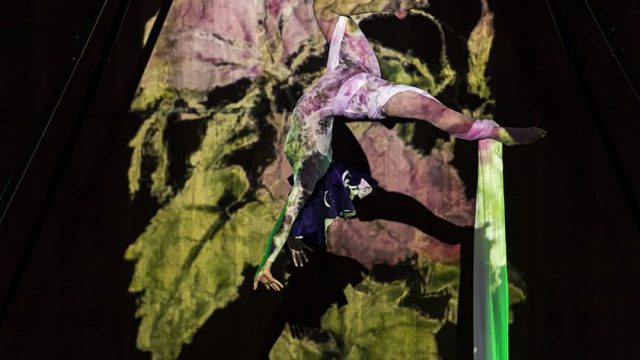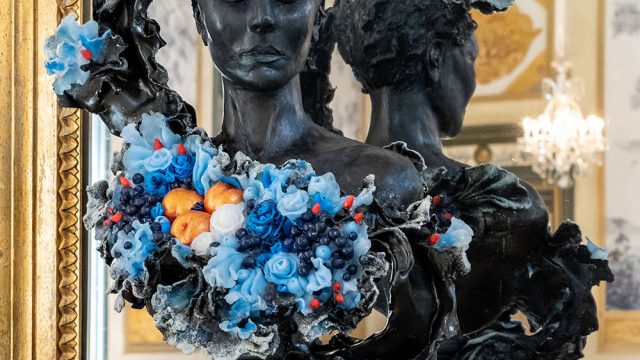Since I have been at the V&A I have been following a kind of trail. I have always been drawn to the curious or odd aspects to inanimate objects and their stories. The prospect of finding starting points for film-making was daunting, there are 4.5 million objects in the museum and I could make a film about anything. A random walk through the galleries became potentially hazardous, often resulting in yet another object apparently clamouring for attention from it’s display case. Each one seemed to say, â??make a film about me!’ For a few days I took short cuts and avoided the galleries – I was beginning to feel over-saturated with potential ideas.
My initial interest was to explore a number of themes for films which could be part of a small collection of animations for inclusion in an animated cabinet of curiosities. Each film would be based on ideas developed from a single object and it’s stories or associations.
I decided to make a selection from the other way round, and begin by viewing the collections through a more personal lens. I thought about themes and some as yet un-aired pre-occupations that had surfaced repeatedly in previous sketchbooks. I knew I wanted to work further with puppetry as well as other animation techniques. Photography would continue to play a large part as it effectively blurs the boundaries between the real world and an imaginary one. I also wanted to play with perceptions of relative scale.
I discovered that the Gamble Room at the V&A was the perfect place for ideas generation. Lulled by the coffee into believing that it was just a leisure moment, ideas almost jumped onto my sketchbook pages. This doesn’t happen as easily for me in the studio, ideas often have to be approached sideways on, it seems they often need time spent in a cafe, a bath or on a train journey so you can catch them obliquely. My studio wall has quickly become like a sketchbook page, a large scale extension of my thoughts, preoccupations and influences. The continuous thread of connections is so obvious when everything is viewed collectively.
While exploring various objects as starting points I came across the image of a pair of gloves in the British Galleries. Just as a powerfully engined car can suddenly appear from nowhere on a motorway, my previous interests were overtaken, and almost blown off the road by the sighting of these gloves. They had gauntleted cuffs elaborately embroidered with animals and seed pearls and had delicate cream kidskin fingers.
Pair of gloves
museum number 1506&A-1882

Like a chemical reaction, the initial thoughts I had had about the visual potential of bestiaries began to fuse with the gloves. I also found I had an unexpected and forceful appreciation of medieval imagery, particularly illuminated manuscripts, previously this period had never caught my imagination, in fact I had even avoided it. I read a little about bestiaries and I was particularly intrigued by the distorted reports from medieval travellers of sightings of strange creatures seen at the edge of the world. There are tall tales of creatures, of vegetable sheep and monopods, cinnamon trees, and men with heads in their chests.
Creatures from The Medieval bestiary

I had recently watched â??The Medieval Mindâ?? (Professor Bartlett-bbc4) and had been struck by the stories told by early travellers to distant lands, sightings of fish men caught off the coast of Suffolk or Green men discovered in Essex. Also mentioned were stories of travellers who were astonished to find that the rumours of dog-headed men living in Peru were untrue. In fact the inhabitants they encountered were equally puzzled as they had thought the dog-headed men originated from the travellers own far distant homeland.
The programme referred to the unacknowledged and imaginary as really being parts of ourselves. This chimed with ideas I had about some experiments I wanted to try with puppetry and animation. In the animated world everything is possible.
I arranged to meet Stuart Frost. He is part of the Concept team who steers the development of the new Medieval and Renaissance galleries opening at the V&A in November 2009. His breadth of knowledge of medieval history was inspiring and he suggested relevant sources which sparked further ideas.
He introduced me to the Ebstorf map from 1300. The original was destroyed in 1943 during the bombing of the Hanover State Archives. A replica will be installed in the V&A’s new galleries. The map is extraordinary, it is 2.5 metres square, and shows Jerusalem at the centre with Christ’s head at the top, and his feet and hands reaching to the edge of the world. The Ebstorf map appears to introduce a fourth continent on the periphery – ‘terra incognita’ – the unknown world. It is inhabited by imaginary creatures, such as gigantipedes, monopods and noseless men.
Ebstorf map 1300
link to Wikipedia entry
Stuart also recommended the book,’Image on the Edge’ by Michael Camille. Camille discusses the nature of the images found in the margins of illuminated manuscripts, where the resistance to medieval constraints found startling originality and expression in the form of visual comment.
It was perfect for my line of thinking… In a section titled’ The world at the edges of the word. I came across this quote by
Camporesi (1989):
People’s fears were exorcised by dumping them on those who inhabited the edges of the known world, who were lesser in some sense;whether troglodites or pygmies…..the outskirts are felt to be infected zones, where all kinds of monstrosities are possible, and where a different man is born, an aberrant from the prototype who inhabits the centre of things.
I want to apply the notion of the unknown existing just out of sight of our rational thought, and represented by these imaginary beasts. There are extraordinary creatures – the stuff of dreams or nightmares featuring in the world of cryptozoology. Current fears about scientific development leading to aberrations echo the views of the medieval world. The periphery has changed location, now it is outer space or a laboratory where the strangeness is expected to exist.
The idea that these imagined beasts are also part of us, the inside of ourselves perceived in the world out there is something I find fascinating. I found this quote (sourced from alchemical writings) which neatly encapsulated this idea.
“Understand that thou hast within thyself herds of cattle
. . . flocks of sheep and flocks of goats
. . . understand that the fowls of the air are also within thee.
Understand that thou thyself art another world in little,
and hast within thee the sun and the moon, and also the stars.
Thou seest that thou hast all those things which the world hath.”
And so I am currently exploring connections found between all these ideas. It never ceases to amaze me that when you start following a single train of thought through research you find unexpected links between apparently unrelated elements. The presence of the hand at the edge of the world on the Ebstorf map was serendipitous for the direction of my ideas for an animation, as I want to base the film I will be making on gloves and glovemaking.
The hand at the edge of the world
(detail from the Ebstorf map)



